The perimeter of the Hagia Sophia offers insights into the historic church that cannot be found during an interior visit. Each corner of the former church offers insights into what formerly existed nearby.
My Google map can be found here. Yet on this map, when on the West side, continue to walk north to the next street. Despite a walking path, Google maps will not allow walking directions through this corner. The picture below gives the route.
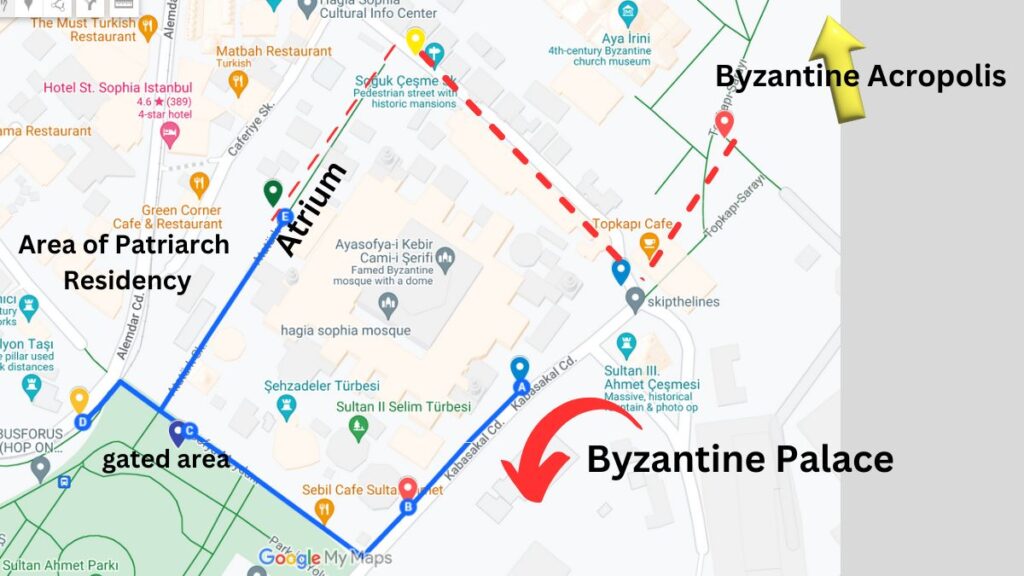
East side of Hagia Sophia
On the Eastern wall of the Hagia Sophia remains the wooden door that was the entry way from the Byzantine palace.
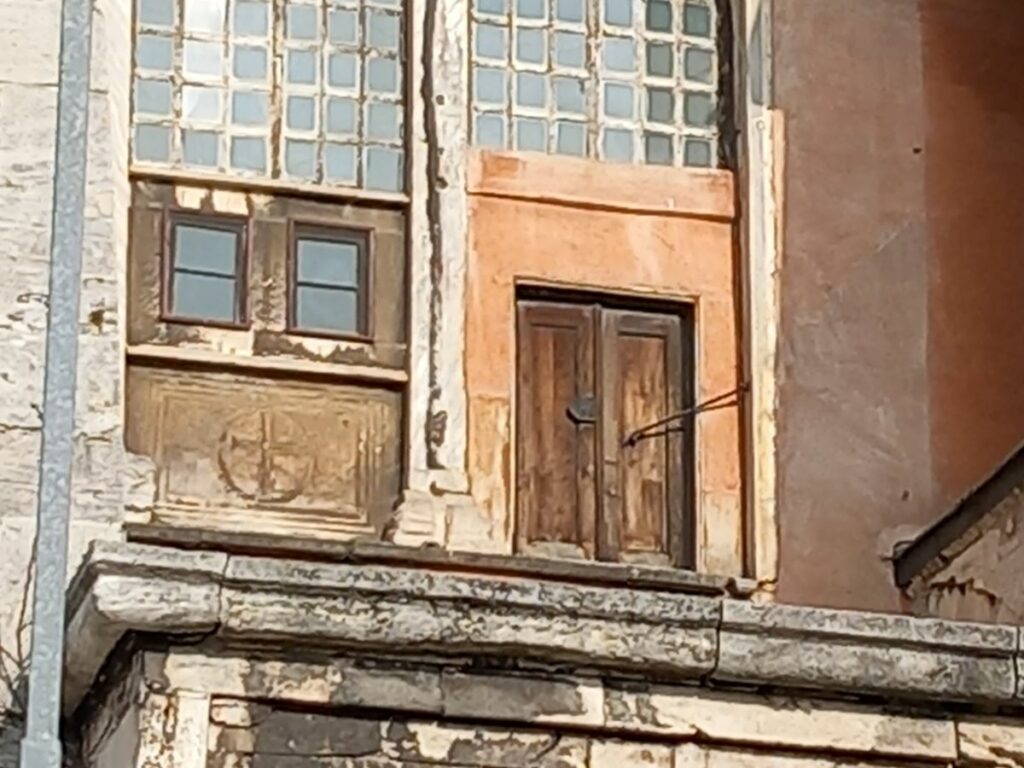
This area faced the royal Chalke Gate, which entered the Grand Palace. The historian Bob Atchison said, “The Chalke Gate was decorated with bronze and marble sculptures and had huge bronze doors. On the left is the famous elevated passage that led from the Great Palace to the South Gallery of Hagia Sophia. This passage was built by Justinian and was used by the Imperial court.[1]https://www.pallasweb.com/deesis/daily-life-in-constantinople.html The royal rulers and empresses entered privately into the church from this direction.
One will pass the Museum mosque near the tourist entrance, which has been there since at least 1845. Ironically, while a museum, this location was used as a mosque, despite many complaining that Muslims could not pray in the complex. Like before, it has become an office space for those working there.


South of the ticket line at the end of the square remains a small entryway to the former Byzantine palace. More buildings and blockage keep making this location almost impossible to view. Currently, there is no opening. They may open up the palace as a museum someday.
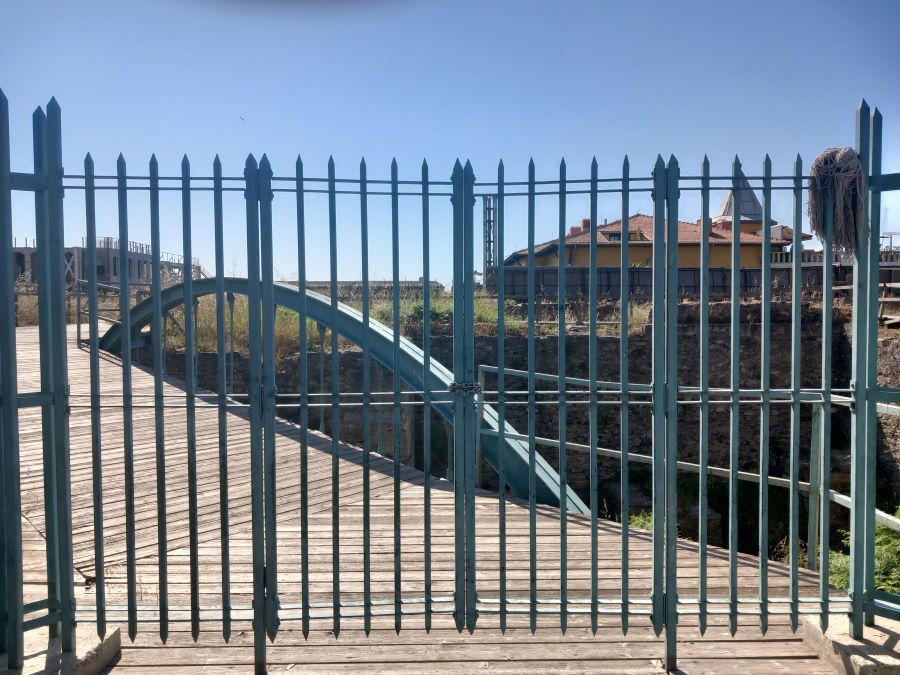

This 1910 postcard shows the Ottoman University, which was built upon the ruins of the former Byzantine palace. Despite archaeological digs at the site, it has never been open to the public and remains overgrown by nature. Istanbul has no Byzantine museum, and those Byzantine Church Museums locations have now become Mosques. Below are pictures from 2023 (left) and 2016 (right).
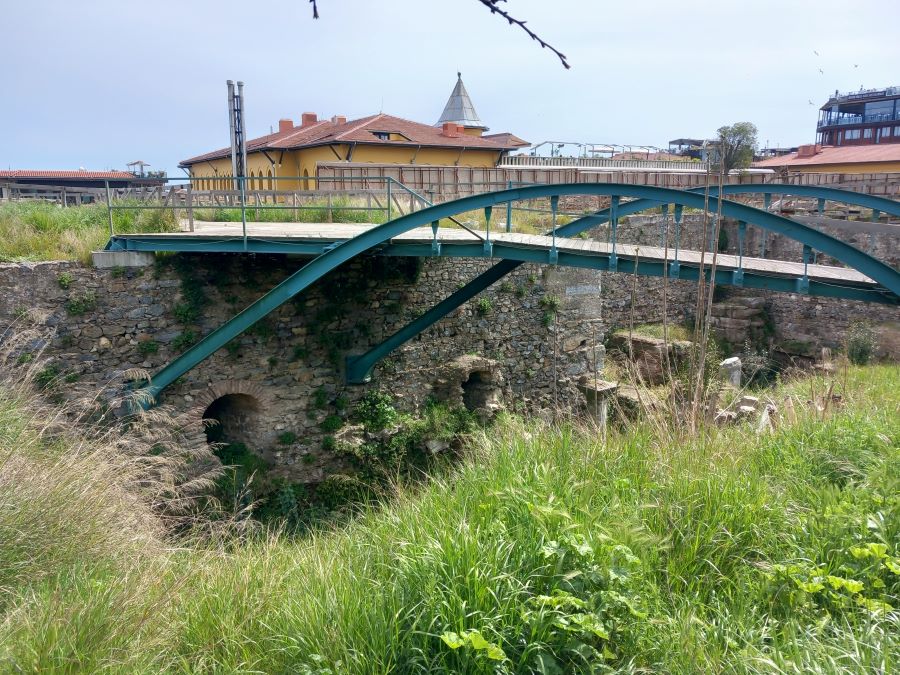
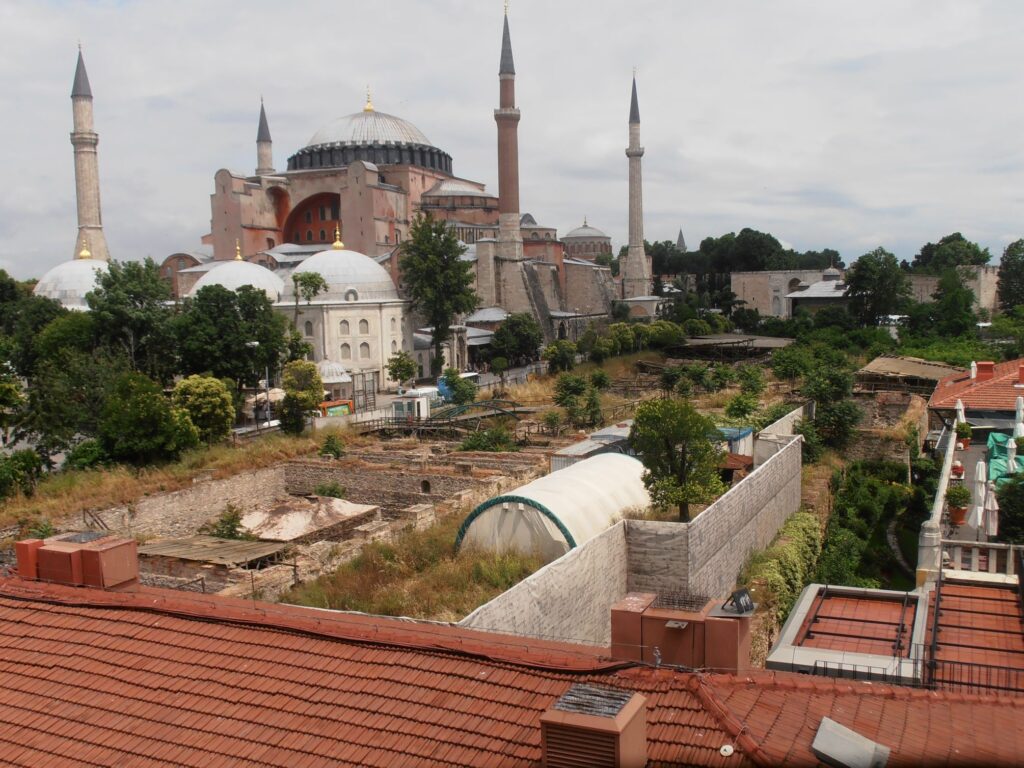
Near the tourist entrance, one will pass the Museum mosque, which has been there since at least 1845. While a museum, this location was used as a mosque. Like before, it has become an office space for those working in the building.
Southern Perimeter of the Hagia Sophia
The Hagia Sophia had squares or open spaces on each side of which the southern side still remains. In the late 1800s, many wooden buildings sat in this area and in the late 1990s, tour buses drove onto and parked on the spot. Now it is only a walking area.
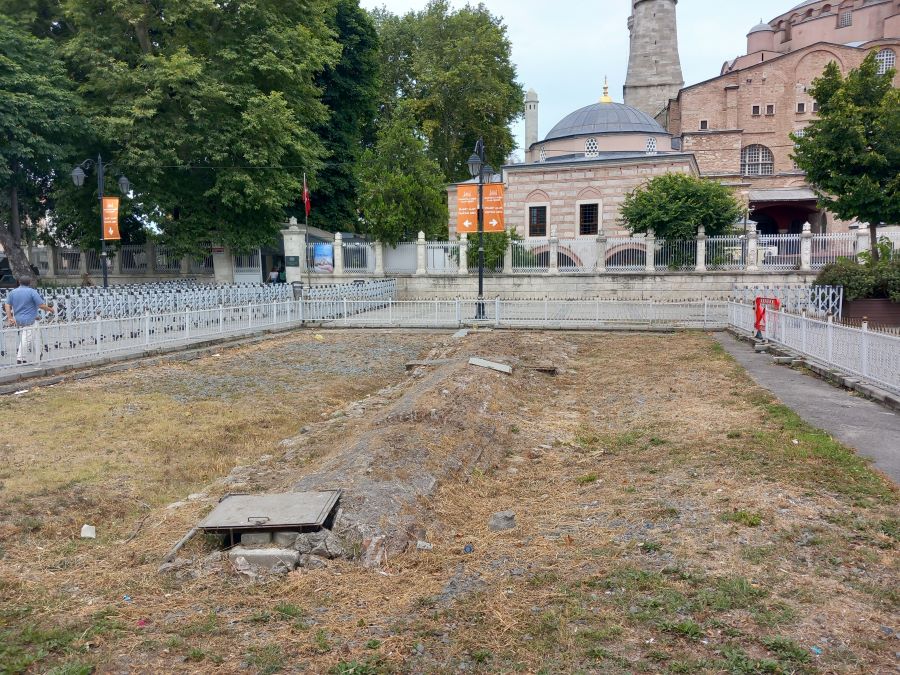
Of interest is this gated area that, for years, lay under the square. This most likely is the water reservoir that supplies some of the wells on the western side of Hagia Sophia.
The Center of the World
The Roman mileage stone monolith at the southwestern corner of the Hagia Sophia offers a glimpse into the ancient world. For over a thousand years, the distance to outlying cities started at this ground-zero location. Later, the Greenwich standard came into use in the 19th century.
Western side of the Hagia Sophia
The former atrium is on the western perimeter of the Hagia Sophia.
On the northwest corner is an Islamic school. The school started in 1453 at the time of conquest and this existed until it became a museum under Ataturk. Then, they destroyed the building. Since it is now a mosque, the madrasa was again built.
North and Northeast Side
The street on the north is called the “Cold Fountain” street. It is mainly now a historic Ottoman street, but formerly, it was the location of Samsun (sometimes called Sampson) Hospital, which lay between St. Irene and Hagia Sophia. This monastery-type location housed those in need of medical care.
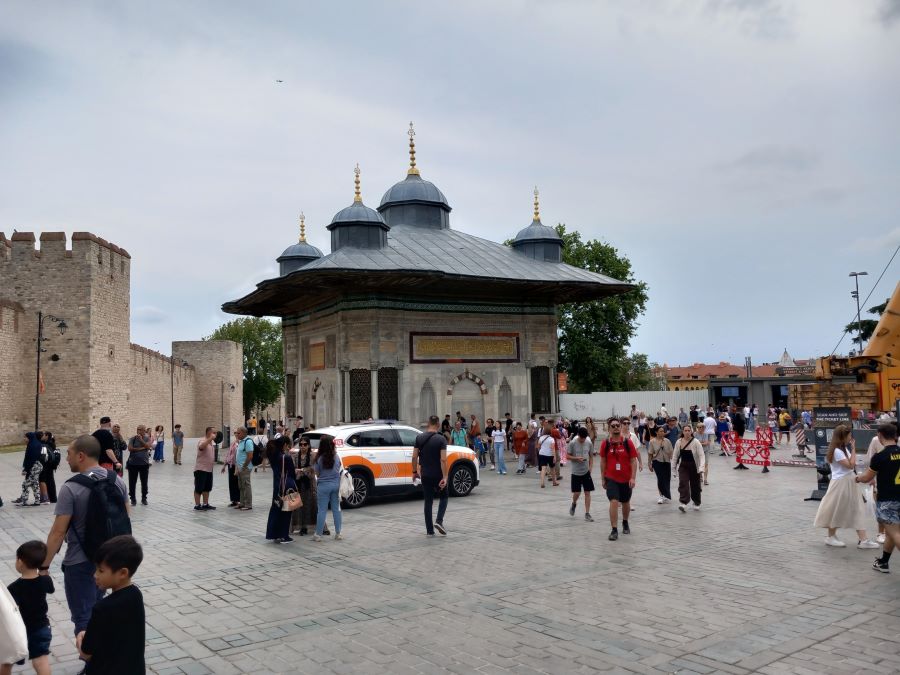
The Ottoman fountain built by Sultan Ahmed III replaced a Byzantine fountain near this exact location. In 1680, Grelot’s drawings showed the fountain as quite small compared to this one.[2]see https://www.pinterest.com/pin/458804280782380304/ The Hagia Sophia sat upon a few wells with cisterns and fountains on each side of the building. The former Byzantine fountain was called Perayton, including the root for spring and meaning tomorrow.[3]ÖDEKAN, Ayla, “Ahmed III. Meydan Çeşmesi”, İstanbul Ansiklopedisi, vol. I., İstanbul, 1995, pp.116-117.
St. Irene Church
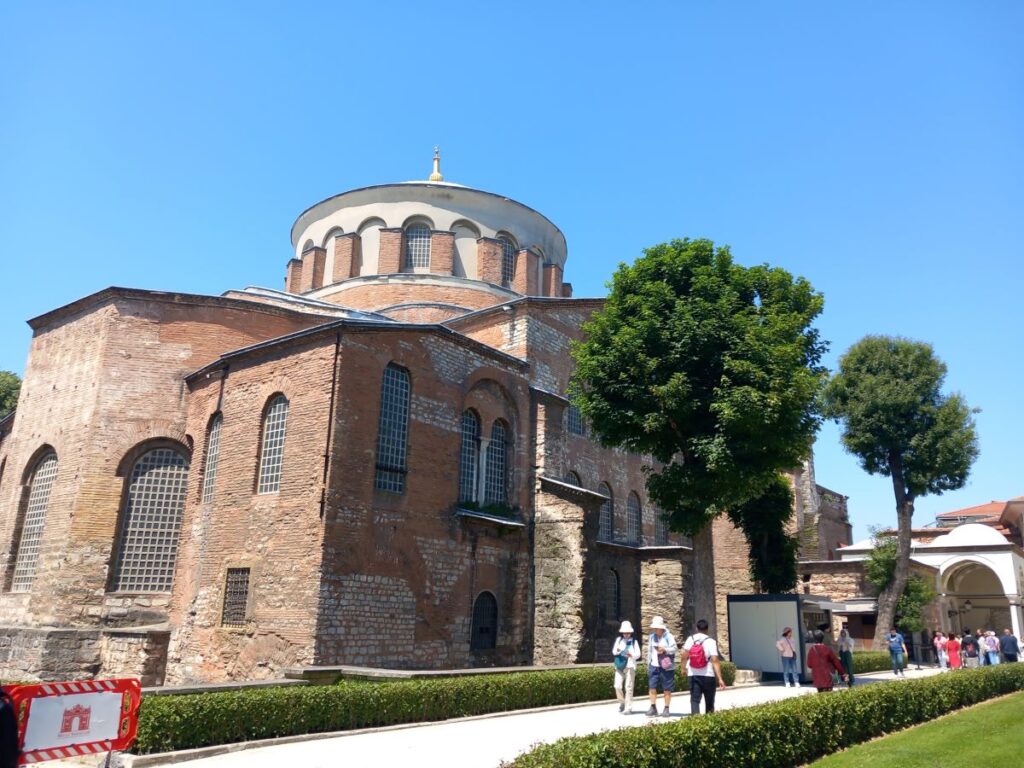
St. Irene is one of the oldest church buildings in Istanbul, and it was never made into a mosque. [4]https://www.thebyzantinelegacy.com/ and https://www.pallasweb.com/deesis/imperial-porphyry-tombs.html
A few ruins from the Byzantine Acropolis (elevated area) remain in this outer Topkapi courtyard. The Topkapi Palace sits in an area formerly a business section up from the Golden Horn port, including dwellings and churches.
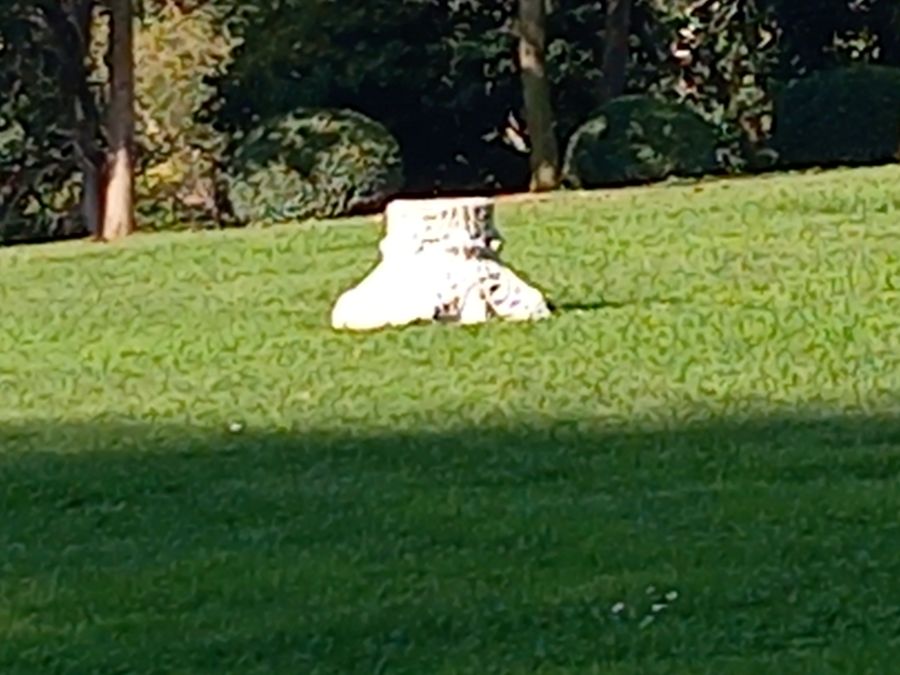
Check out my other walking tours
References
| ↑1 | https://www.pallasweb.com/deesis/daily-life-in-constantinople.html |
|---|---|
| ↑2 | see https://www.pinterest.com/pin/458804280782380304/ |
| ↑3 | ÖDEKAN, Ayla, “Ahmed III. Meydan Çeşmesi”, İstanbul Ansiklopedisi, vol. I., İstanbul, 1995, pp.116-117. |
| ↑4 | https://www.thebyzantinelegacy.com/ and https://www.pallasweb.com/deesis/imperial-porphyry-tombs.html |
[…] the Seljuks and Ottomans often converted important Byzantine sites into their central mosque, which Istanbul, Iznik, Bursa, and Antalya illustrate. We can assume that Nicomedia fell into the same pattern, […]